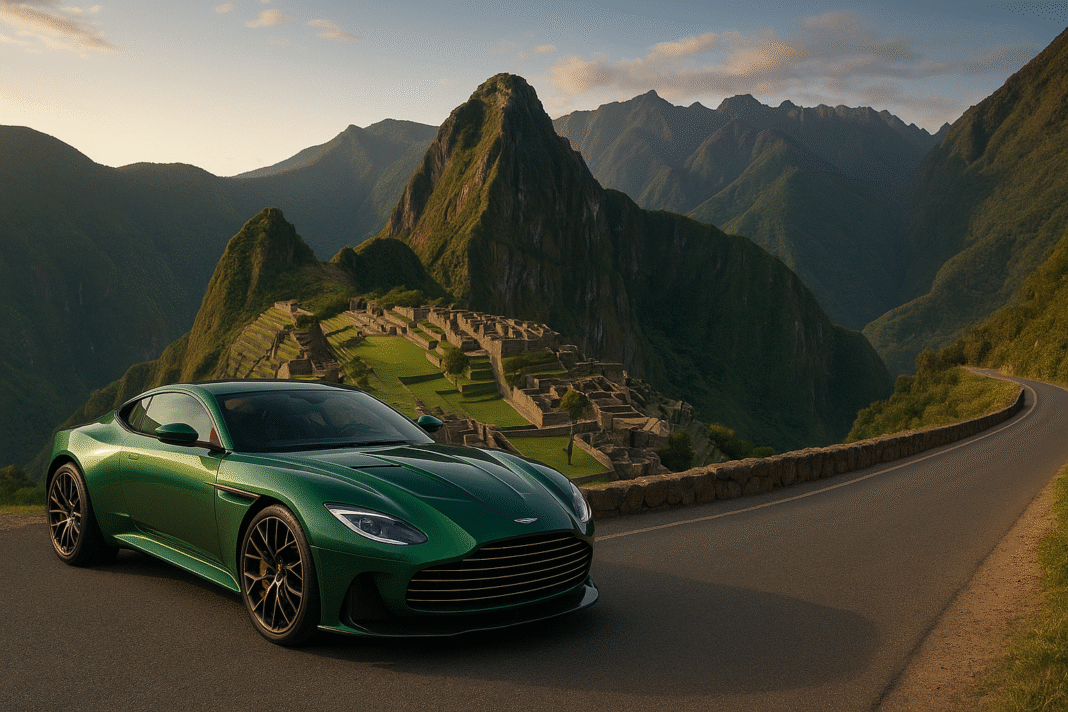In an era dominated by algorithms, automation, and paddle shifters, the Aston Martin Valour arrives as a glorious anomaly — a car that defiantly celebrates analog emotion in a digital world. With only 110 units planned for production, the Valour isn’t just rare — it’s a symbol of resistance against the soulless march of homogenized performance.
This isn’t a nostalgia act. It’s a reminder of what driving used to feel like. And why it still matters.
A Celebration of Heritage
Unveiled in 2023 and delivered into a world in transition, the Aston Martin Valour was built to honor the brand’s 110th anniversary. It fuses visual cues from icons like the V8 Vantage, DBR1, and Victor, blending them with a modern carbon fiber body to create something both timeless and raw.
At first glance, the Valour looks like a reimagined vision of the 1970s GTs. It has the long hood, wide hips, and angry stance that defined an era of analog aggression. But beneath that heritage-rich silhouette sits a machine very much designed for the present — and maybe even the future.
Under the Hood: A Proper V12, No Hybrid in Sight
What powers the Valour is what makes it heroic: a 5.2-liter twin-turbocharged V12, hand-built by Aston Martin, producing 715 horsepower and 555 lb-ft of torque.
Even more important than the numbers? It’s mated to a 6-speed manual transmission.
Let that sink in. In 2025, when even some performance cars are ditching real gears in favor of dual-clutch wizardry or all-electric torque vectors, the Valour gives you three pedals and a stick. There is no paddle shifter option. No automatic. No compromise.
And that decision is deliberate.
Aston Martin built the Valour for a driver who wants to feel the machinery. Who wants to stall the car once in a while. Who believes heel-and-toe downshifting isn’t an inconvenience, but an art form.
Analog Craftsmanship in a Digital World
Inside the cabin, Aston Martin has resisted digital bloat. The Valour’s interior is focused, tactile, and handcrafted. The gated shifter is exposed, its linkage visible like a skeleton watch. The seats are trimmed in hand-stitched leather and woven wool, with aluminum switchgear that clicks with satisfying mechanical resistance.
There’s no giant curved screen trying to be your best friend. There’s no AI co-pilot offering life advice. Just an engine, a clutch, and a car that answers only to you.
In this sense, the Valour is more than a car. It’s an experience that’s becoming harder to find — especially in a year when most automakers are racing toward EV-only platforms and Level 3 autonomy.
Why the Valour Matters in 2025
In the midst of this shift toward electric mobility, the Valour isn’t just about performance — it’s about philosophy. It’s about defending something irreplaceable: the relationship between driver and machine.
Whereas electric supercars can offer breathtaking speed and zero lag, they often remove the visceral connection that made us fall in love with driving in the first place. The Valour restores that.
It reminds us:
- That analog still has value in a digital world
- That noise, vibration, and even imperfection are part of the thrill
- That a machine doesn’t need to be perfect to be alive
Limited to 110 Units: A Statement of Intent
Aston Martin is only building 110 Valours, making it one of the rarest cars in the company’s history. Each is custom-specified by the buyer, with a wide palette of retro-inspired color schemes and materials. Every one will be collectible — but more importantly, every one is driveable.
And that’s the point. This isn’t a car to hide away in a climate-controlled vault. It’s a car to drive — with purpose, with effort, and with a smile on your face.
Final Thoughts
The Aston Martin Valour is a love letter to a dying breed: the analog grand tourer. In a market dominated by data and driven by automation, it dares to offer feel over feedback, mechanical over digital, and soul over science.
It’s not the future. It’s a reminder of everything the future shouldn’t forget.
And for that, it might just be the most important car of 2025.

